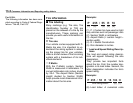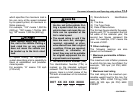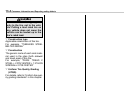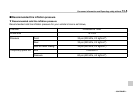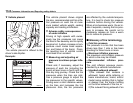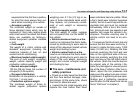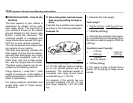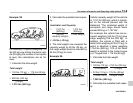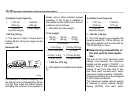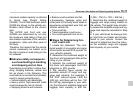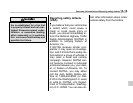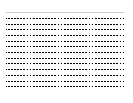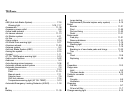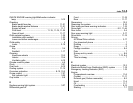
13-10 Consumer information and Reporting safety defects
3. The result of step 2 shows that a
further 88 lbs (40 kg) of cargo can be
carried.
Example 2B
For example, if a person weighing 143
lbs (65 kg) and a child weighing 40 lbs
(18 kg) now enter the same vehicle
(bringing the number of occupants to
three), and a child restraint system
weighing 11 lbs (5 kg) is installed in
the vehicle for the child to use, the cal-
culations are as follows:
1. Calculate the total weight.
2. Calculate the available load capac-
ity.
3. The total weight now exceeds the
capacity weight by 105 lbs (48 kg), so
the cargo weight must be reduced by
105 lbs (48 kg) or more.
Determining compatibility of
tire and vehicle load capaci-
ties
The sum of four tires’ maximum load
ratings must exceed the maximum
loaded vehicle weight (“GVWR”). In
addition, sum of the maximum load
ratings of two front tires and of two
rear tires must exceed each axle’s
maximum loaded capacity (“GAWR”).
Original equipment tires are designed
to fulfill those conditions.
The maximum loaded vehicle weight
is referred to Gross Vehicle Weight
Rating (GVWR). And each axle’s
Available Load Capacity
(Vehicle
capacity weight)
(Total weight)
1,157 lbs
(525 kg)
1,069 lbs
(485 kg)
= 88 lbs (40 kg)
–
=
D00104
Total weight
(Occupant)
(Cargo)
(Trailer hitch)
(Child restraint)
(Tongue load)
165 lbs
(75 kg)
143 lbs
(65 kg)
40 lbs
(18 kg)
++
11 lbs (5 kg) 705 lbs (320 kg)
22 lbs (10 kg)
176 lbs (80 kg)
= 1,263 lbs (573 kg)
+
+
+
+
=
Available Load Capacity
(Vehicle
capacity weight)
(Total weight)
1,157 lbs
(525 kg)
1,263 lbs
(573 kg)
= –105 lbs (–48 kg)
–
=



